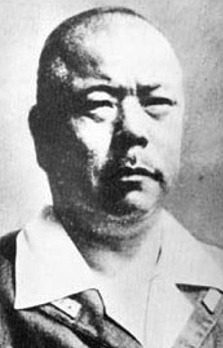General Tomoyuki Yamashita
General Tomoyuki Yamashita commanded the Japanese invasion of Singapore and Malaya in December 1941. His successes earned him the nickname ‘the Tiger of Malaya’. After surrendering in September 1945, he was found guilty of war crimes and executed.
Born on 8 November 1885 on the island of Shikoku, Yamashita joined the military academy at Hiroshima at the age of 15. His gained a reputation for industry and in 1905 he was transferred to the Central Military Academy in Tokyo. In 1913, after several failed attempts, Yamashita passed the exams for the General Staff College. Three years later, he graduated sixth in his class.
From 1919 to 1921, Yamashita worked as a military attaché in Berlin and Berne, Switzerland. During this time he met Hideki Tojo, who would later become his rival. In 1921 he returned to Japan and worked within the General Staff of the Imperial Japanese Army. In 1930 he was tasked with commanding the 3rd Imperial Infantry Regiment.
After the incident on 26 February 1936 - a failed coup d’etat by young army personnel of the Koda-Ha group - Yamashita recommended leniency towards those involved, a move that did not endear himself to Emperor Hirohito. Yamashita was also associated with the Koda-Ha cabal, an aggressive wing of the Japanese Imperial Army. His name was removed from the army’s promotion list and he was sent away to a command in Seoul, Korea. However, he was promoted to the rank of lieutenant general in November 1937 and he slowly won back the emperor’s trust.

From 1938 to 1940, Yamashita commanded the 4th Division of the Japanese army in Northern China. In late 1940, Yamashita visited Europe and met Hitler and Mussolini.
On 6 November 1941, Yamashita was given command of the 25th Army. He had just a month to prepare his army for the attack on Singapore and Malaya, scheduled for 8 December. Despite this short preparation period, Yamashita’s attack was successful and he became known as the ‘Tiger of Malaya’. He captured 130,000 Prisoners of War during the campaign, the largest number in British and Commonwealth military history.
Yamashita’s successes increased his influence in Tokyo. This would have displeased his rival Tojo, who is thought to have been behind Yamshita’s 1942 appointment as commander of the Japanese 1st Army in Manchuria. This command would keep Yamashita out of the most important theatre of war - the Pacific - and dilute his influence in Tokyo.
In October 1944, as America’s giant war machine made significant inroads into the Japanese military, Yamashita was appointed head of the 14th Area Army and was tasked with defending the Philippines. He had over 250,000 soldiers at his disposal, but this vast force was less an efficient fighting unit and more a logistical nightmare: America’s supremacy at sea made it almost impossible to supply his men. America’s submarines and planes mercilessly hunted down Japanese supply ships.
Yamashita was forced out of Manila by the advancing Americans and re-established his headquarters in the mountains of northern Luzon. Between February and March 1945 Japanese soldiers in and around Manila killed over 100,000 Filipino civilians. The ‘Manila Massacre’ would later be used as evidence in Yamashita’s war trial.
On 2 September, Yamashita surrendered his remaining troops, which now numbered less than 50,000. On 25 September he was arrested and formally charged with war crimes. He was accused of failing to control his men who carried out massacres (for example, at the Alexandra Hospital in Singapore and at Manila in the Philippines). The trial took place in the Philippines.
Yamashita’s defence attorney argued that Yamashita could not be held responsible for the massacre in Manila: communications in the Philippines were so poor that he was not aware of happenings in Manila while he was in Lurzon. Colonel Harry Clarke, Snr. also argued that Yamashita had recognised illegalities in Singapore and punished the men responsible: he had, for example, ordered the execution of the officers in charge of the soldiers who had carried out the killings at the Alexandra Hospital.
This defence failed. On 7 December 1945, Yamashita was found guilty of war crimes under a precedent that became known as the ‘Yamashita Standard’: a commanding officer had to take full responsibility for the actions of the men under his command.
Hearsay evidence had been utilised during court proceedings and the legitimacy of the trial was subsequently called into question. Appeals to both the Philippines Supreme Court and the US Supreme Court failed. It is thought that Douglas MacArthur wanted a swift trial with a guilty verdict to set a precedent for subsequent war trials.
On 23 February 1946 Yamashita was executed by hanging. These were his final words:
“I believe I have done my duty to the best of my ability throughout the whole war. Now at the time of my death and before God I have nothing to be ashamed of. Please remember me to the American officers who defended me.”
MLA Citation/Reference
"General Tomoyuki Yamashita". HistoryLearning.com. 2026. Web.
